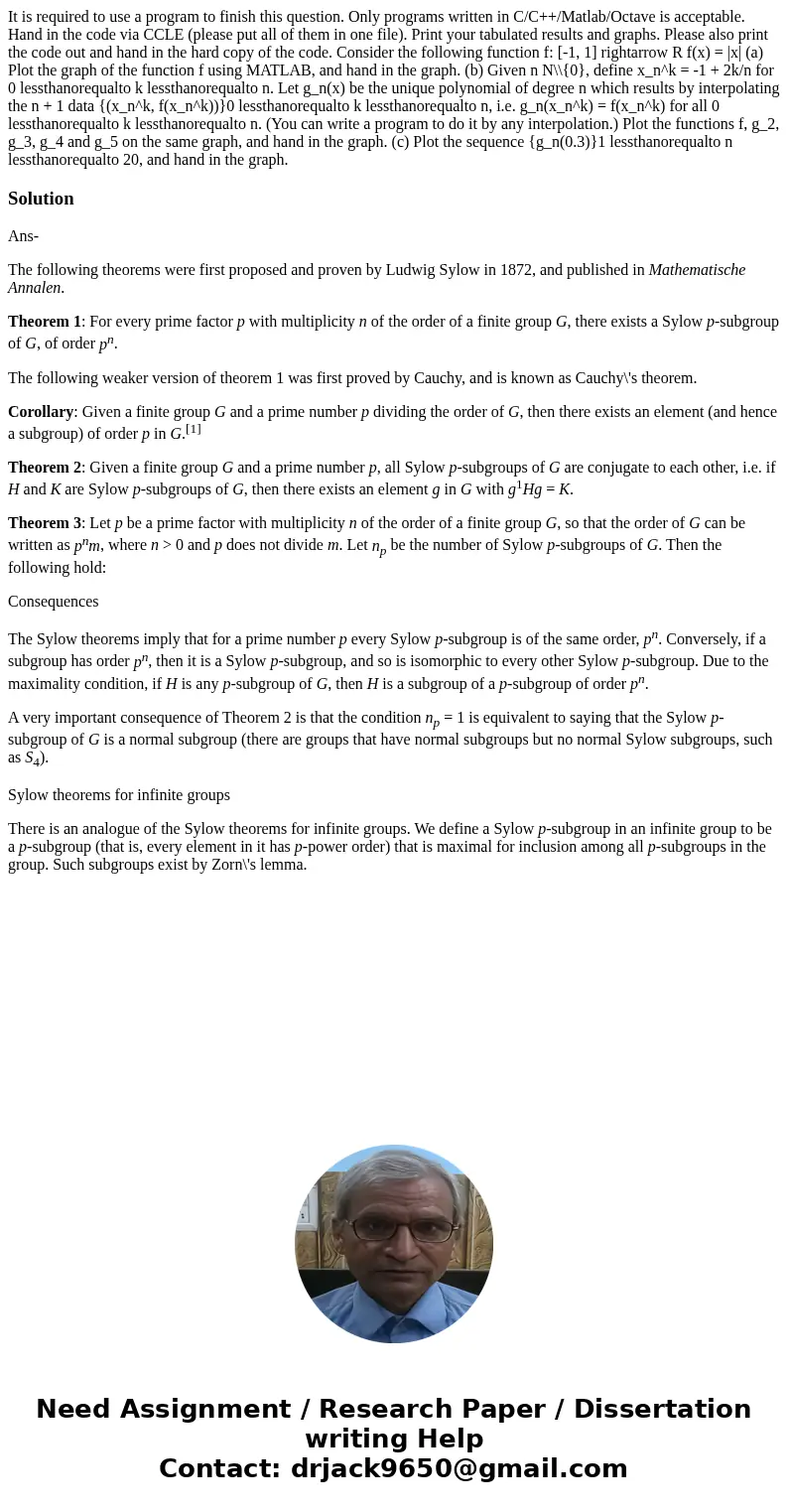It is required to use a program to finish this question Only
Solution
Ans-
The following theorems were first proposed and proven by Ludwig Sylow in 1872, and published in Mathematische Annalen.
Theorem 1: For every prime factor p with multiplicity n of the order of a finite group G, there exists a Sylow p-subgroup of G, of order pn.
The following weaker version of theorem 1 was first proved by Cauchy, and is known as Cauchy\'s theorem.
Corollary: Given a finite group G and a prime number p dividing the order of G, then there exists an element (and hence a subgroup) of order p in G.[1]
Theorem 2: Given a finite group G and a prime number p, all Sylow p-subgroups of G are conjugate to each other, i.e. if H and K are Sylow p-subgroups of G, then there exists an element g in G with g1Hg = K.
Theorem 3: Let p be a prime factor with multiplicity n of the order of a finite group G, so that the order of G can be written as pnm, where n > 0 and p does not divide m. Let np be the number of Sylow p-subgroups of G. Then the following hold:
Consequences
The Sylow theorems imply that for a prime number p every Sylow p-subgroup is of the same order, pn. Conversely, if a subgroup has order pn, then it is a Sylow p-subgroup, and so is isomorphic to every other Sylow p-subgroup. Due to the maximality condition, if H is any p-subgroup of G, then H is a subgroup of a p-subgroup of order pn.
A very important consequence of Theorem 2 is that the condition np = 1 is equivalent to saying that the Sylow p-subgroup of G is a normal subgroup (there are groups that have normal subgroups but no normal Sylow subgroups, such as S4).
Sylow theorems for infinite groups
There is an analogue of the Sylow theorems for infinite groups. We define a Sylow p-subgroup in an infinite group to be a p-subgroup (that is, every element in it has p-power order) that is maximal for inclusion among all p-subgroups in the group. Such subgroups exist by Zorn\'s lemma.

 Homework Sourse
Homework Sourse